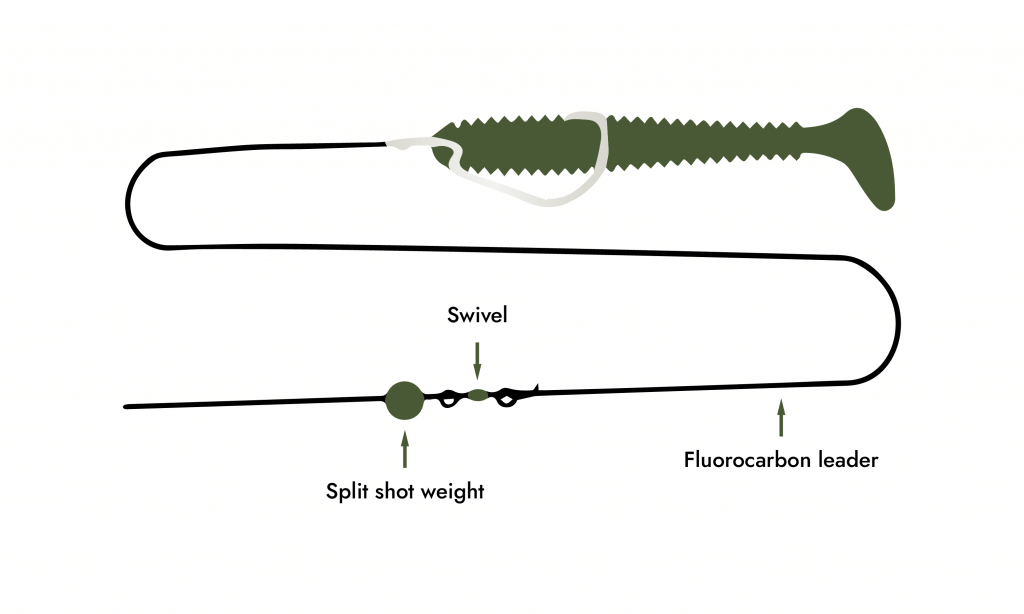A Crash Course to Catching Trout in Streams
Trout in streams are a whole ‘nother beast compared to the stocker trout we catch in lakes. The #1 rule to remember is that now, you’re going to be fishing a creek - the water is shallower, and the water is moving - so the fish will behave differently. In the article, I’ll try and stay away from complicated terminology, and start with the absolute basics (this is mostly a spin fishing guide, not fly fishing). Read on to find out more.
First off, your setup:
In general, you can probably use the same rod you’d use for trout in a lake. However, I would try to use a rod on the shorter end (~5-6 ft), if possible. Oftentimes, streams are surrounded by heavy brush or overhanging branches, and a smaller rod gives you a bit of extra maneuverability that is an absolute lifesaver.
If you want some specific recommendations:
Okuma Avenger Travel Kit
Berkley Trilene XL Monofilament Line (4 lb)
Just like in still water, a cheap setup from Walmart or Big 5 will probably work just as well. This cheap setup from Amazon, which I haven’t used, also seems like it would work well. If you buy a combo with pre-spooled line, I’d probably replace the line if possible - the pre-spooled line is usually pretty low quality and will cause you a lot of pain in the future.
Let’s Talk Fish
Before we get into the nitty gritty of your exact rigs and baits, I think it’s very important in the context of stream fishing to talk about how trout will behave in this new environment. In the fly fishing canon, it’s often repeated that trout in streams are constantly trying to balance three things, in no particular order:
1. Current
Just like humans, trout are lazy. As a result, trout don’t want to be hanging out in the absolute fastest moving parts of the stream, unless they absolutely have to. What that means is that in general, trout will either be sheltering in slower moving parts of a river where the water deepens and the current slows, or hiding behind rocks, fallen logs, or other underwater cover.
2. Food
Trout also want to have easy access to food. In general, in most streams, the current often provides the main food source - insects that have fallen into the water upstream will drift with the current, so trout will want to be near areas where the current causes food to concentrate - keep an eye out for “current lines” - lines of bubbles on the surface of a stream which will often indicate where the stream is carrying food to.
3. Cover
Trout also don’t want to get eaten by predators. What that means is that most of the time, trout will keep some sort of cover nearby at all times - whether that be deeper water, a fallen tree, or some other kind of protection from birds above.
In general, the more these conditions are satisfied at a particular spot in the river, the more likely there will be a fish there, and the bigger it will be. Odds are that trout will not move far from such a spot over a period of time.
What does that mean for us as anglers? Every time we fish a stream, we need to do two things. First, we need to identify a spot where we think fish might be - this might be behind a rock in the river, next to a fallen tree or a deeper pool. Second, we need to present our bait to the fish in a way that matches how they usually get food - in short, we need to cast upstream of that spot we marked, and let our bait drift naturally with the current to the fish, as if it was a real bug that fell in the water upstream.
Your Rig
With these ideas in mind, let’s talk the exact rig you should be using.
If you want to fish bait, all you should be using is just a hook, and maybe 1-2 split shot if necessary - something like this:

Your goal is to get your bait to drift naturally in the current - so the less weight, the better, unless you really need the extra casting distance or the current is too fast. I usually get lead-free split shots - something like this. I combine it with a size 8 baitholder hook. For bait, I mainly use three or four different things:
Worms/Nightcrawlers
Powerbait Micetails
Pautzke's Salmon Eggs
Crickets
If you want to use lures, your typical lures for trout in lakes will probably work just as well. In general, they’re a little harder to fish in streams - you might have to work them a little faster to get the proper action, and avoiding snags will be tough. But they often net some of the larger fish in a stream. In general, you should cast upstream or cross-stream and let your lures naturally drift downstream. Retrieve as slowly as you can so that your lure behaves with a reasonable action.
Panther Martin, 1/16 oz
Thomas Buoyant, 1/4 or 1/6 oz
Mini jig, 1/16 or 1/32 oz
With that, you’re all set to start fishing for trout in streams! Just remember - trout want easy access to food, respite from the current, and safety from predators nearby. Keep these ideas in mind, and you’ll be on the trout in no time.









